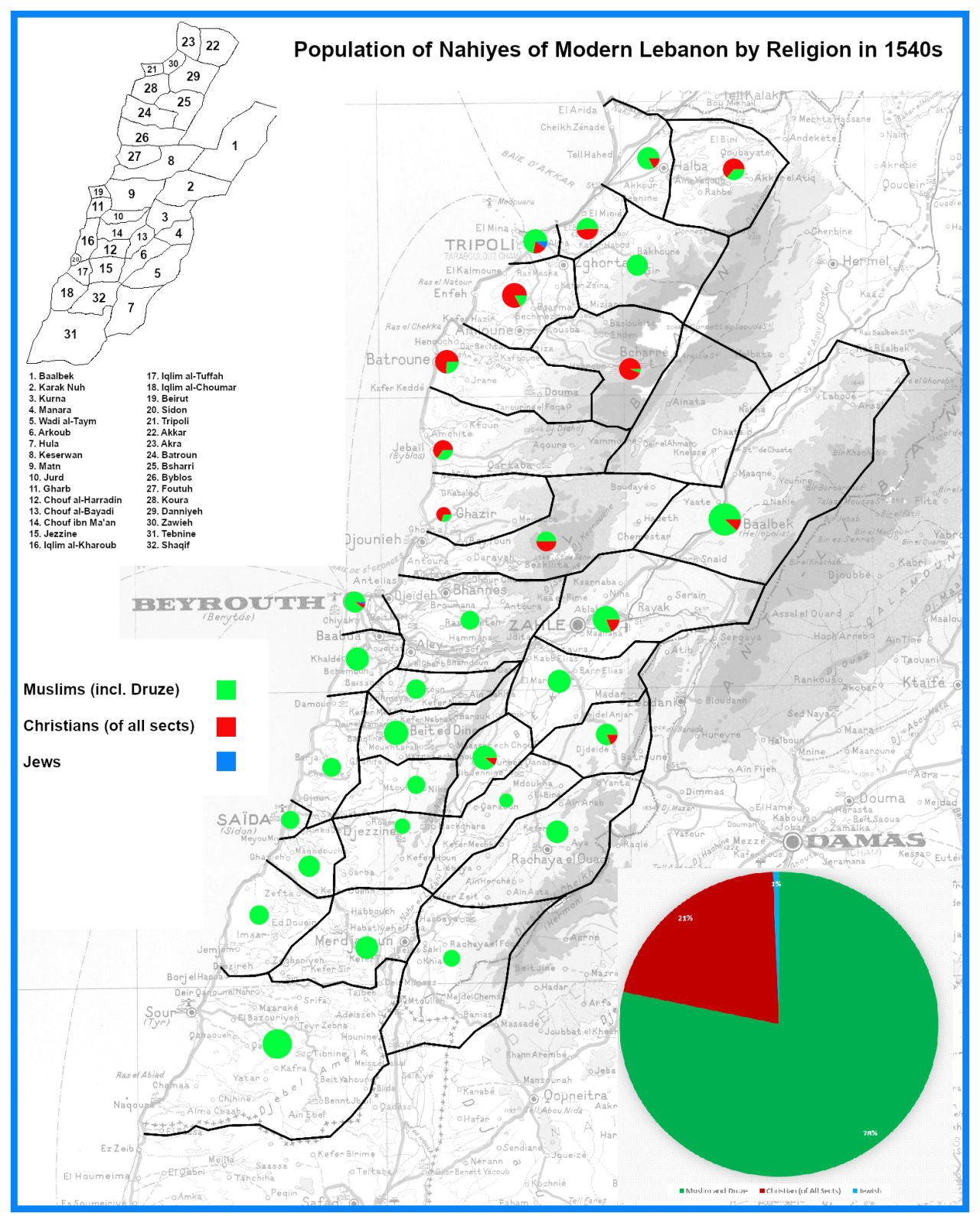
Religious
Distribution in the Subdivisions (Nahiyas) of the Mount Lebanon Emirate
in the 1540s according to Ottoman Tax Registries.
by u/R120Tunisia:
The map wasn’t made by me. The original post is here though I modified it by adding a small graph that shows the overall percentages below.
The map uses various books that summarize the results of the tax registries as a source.
In
case you might be wondering : “Wasn’t Lebanon Christian majority ?”
well at that point, no. The largest religious group at the time would
have been the Druze followed by Shias. Note the Druze were technically
part of the Muslim millet and didn’t pay the Jizya so they were included
in the Muslim category at the time.The
Druze though were far from united. They originated from the foothills
of the Anti-Lebanon Mountains and were settled by the Ayyubids and
Mamluks over the years along the central Levantine coast to guard from
Crusader naval incursions and raids. In the absence of crusader threats,
the various Druze clans started to fight among each other, with a
divide appearing between Qaysi Druze clans (who claimed descent from
Northern Arabian tribes) and Yamani Druze clans (who claimed descent
from Southern Arabian tribes). The former were supported by local Sunnis
and Shias while the latter had the support of local Ottoman
authorities.The Qaysis eventually gained the upper hand following the Battle of Ain Dara
and most of the Yamani Druze were expelled from Lebanon with most
moving into what is today Jabal al-Druze which was sparsely populated at
the time (this was how Syria got most of its Druze as well). Meanwhile,
the Qaysi clans that prevailed started to invite Christian peasants
from the Mt Lebanon area as well as from all over the Levant into the
area to repopulate the towns and villages left empty by the Yamanis and
to become tenant farmers under them. These new immigrants were mainly
Maronite but also Orthodox and Melkite to a lesser degree.This
Christian immigration would increase following the takeover of the
Shihab dynasty, a Sunni family from the Anti-Lebanon Mountains,
following the death of the last Druze Qaysi Ma’nid Emirs. The new
dynasty were in frequent conflict with Druze landlords so to build a
power base in the area they started to support the Maronite clergy and
created local conditions friendly to Christian life (some Shihab Emirs
would even convert to Christianity).And
finally two other factors : Christians tended to be poorer and rural
(especially Maronites), and the rural poor tend to have higher
birthrates, and at the time, there was a split among the local Orthodox
population of the Levant that caused many to join the new Melkite
Catholic Church leading to many members leaving their communities for
sectarian reasons and moving into Lebanon to create new communities out
of scratch (most notables of these is Zahlé, Lebanon’s third largest
city and the largest Christian majority town in the Middle East, which
continues to have a Melkite majority to this day).Tl;dr
: in the late 17th and early 18th century following inter-Druze
conflict and the takeover of the Shihab dynasty, a demographic shift
occurred in what is today Lebanon that led to a huge decrease in the
Druze population and an increase of the Christian population due to
immigration (to re-populate areas emptied by the Druze who left and
trigged by both the local conditions in the area as well as theological
disputes within the Christian communities of the Levant) as well as
higher birthrates, eventually leading to Christians becoming a slight
majority in the area.
